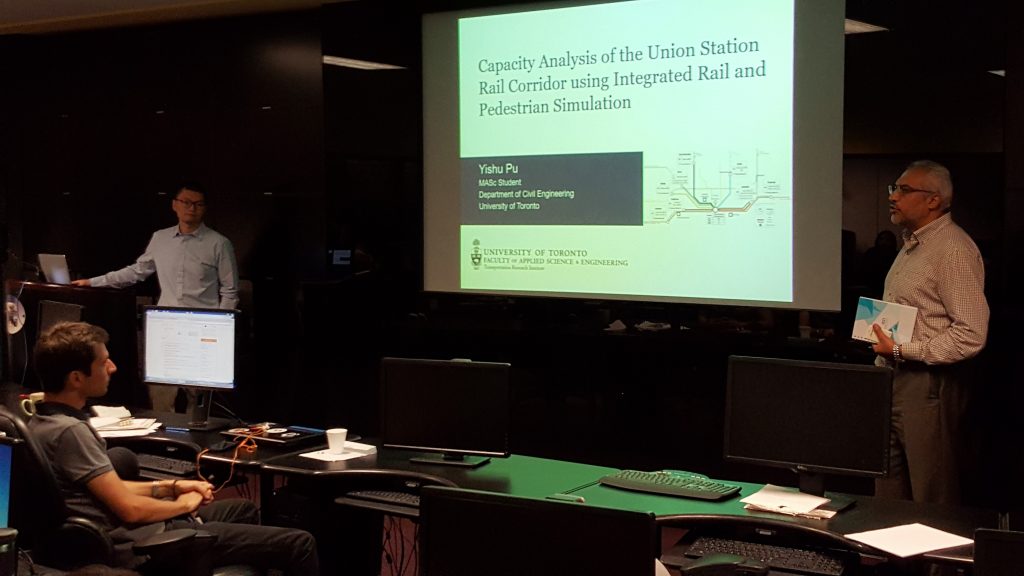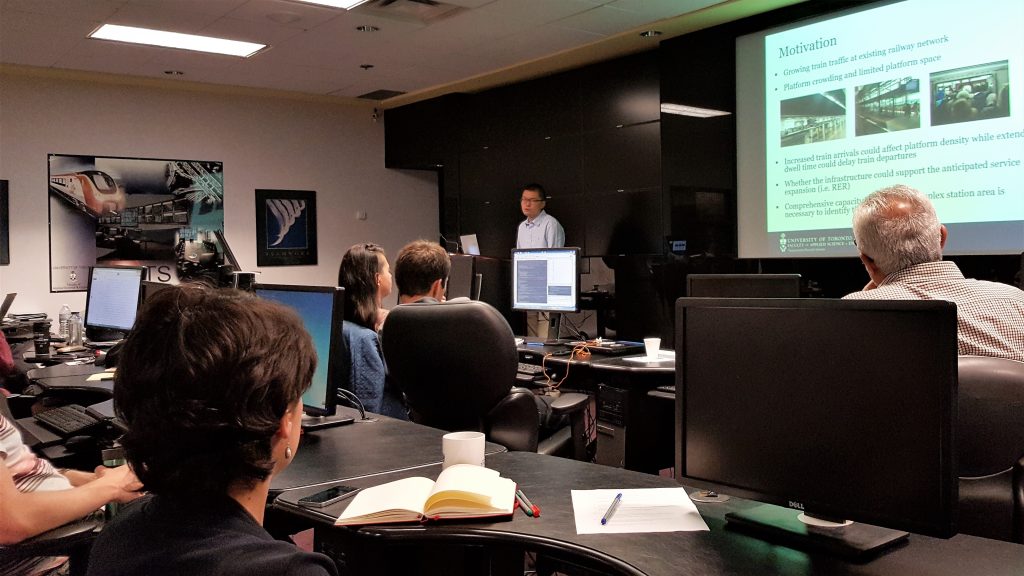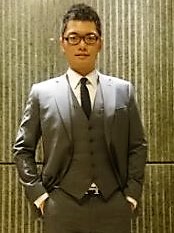September 8, 2017
 MASc Thesis Supervisor Professor Amer Shalaby introduces Yishu (Roy) Pu (photo: T. Romancyshyn)
MASc Thesis Supervisor Professor Amer Shalaby introduces Yishu (Roy) Pu (photo: T. Romancyshyn)
Yishu (Roy) Pu presented his MASc thesis as part of the UT-ITE Seminar Series on September 8, 2017. His talk was well attended by professors, fellow students and guests and was followed by a lively discussion.
 Yishu Roy Pu, September 8, 2017 (photo: T. Romancyshyn)
Yishu Roy Pu, September 8, 2017 (photo: T. Romancyshyn)
Yishu kindly shared a PDF of his presentation file here: Capacity Analysis of the Union Station Rail Corridor Using Integrated Rail and Pedestrian Simulation.
Abstract
The capacity evaluation of railway station areas is essential for accommodating future growth in demand and new rail services.
Conventional capacity analysis methodologies (analytical, optimization) have limitations due to over-simplified assumptions. While simulation tools have proven effective in analyzing complex station areas, the interactive effects between pedestrian and train movements are hardly captured properly.
The study analyzed representative analytical and railway simulation methods, and applied an integrated simulation platform – Nexus (connected with OpenTrack and MassMotion) – to perform a comprehensive capacity analysis of the Union Station Rail Corridor. A 9% drop in on-time performance was observed and passengers’ average duration at LOS F tripled with the increase of train and passenger volumes. Both length and variation of dwell time due to pedestrian movement were recognized as the main factors of performance deterioration. The study also revealed the applicability and benefits of using such integrated simulation tools in other complex transit systems.

Yishu Pu is an MASc student under the supervision of Professor Amer Shalaby in the Department of Civil Engineering at the University of Toronto. His research focuses on performance and capacity analysis of railway systems using multi-modal simulation tools.
Yishu has a strong interest and passion in public transit and transportation. He received his B.Eng. degree at the school of Transportation Engineering from Tongji University in China. He had three years of work experience at a logistics firm after obtaining an M.Eng. degree in Industrial Engineering from the University of Windsor.
Acknowledgements
Yishu wishes to thank ARUP, NSERC, University of Toronto and Metrolinx for providing data, technical and financial support. He also thanks his fellow students for helping with data collection, and Professor Amer Shalaby and Dr. Siva Srikukenthiran for offering guidance.
This seminar was presented by the University of Toronto Institute of Transportation Engineers (ITE) Student Chapter.
